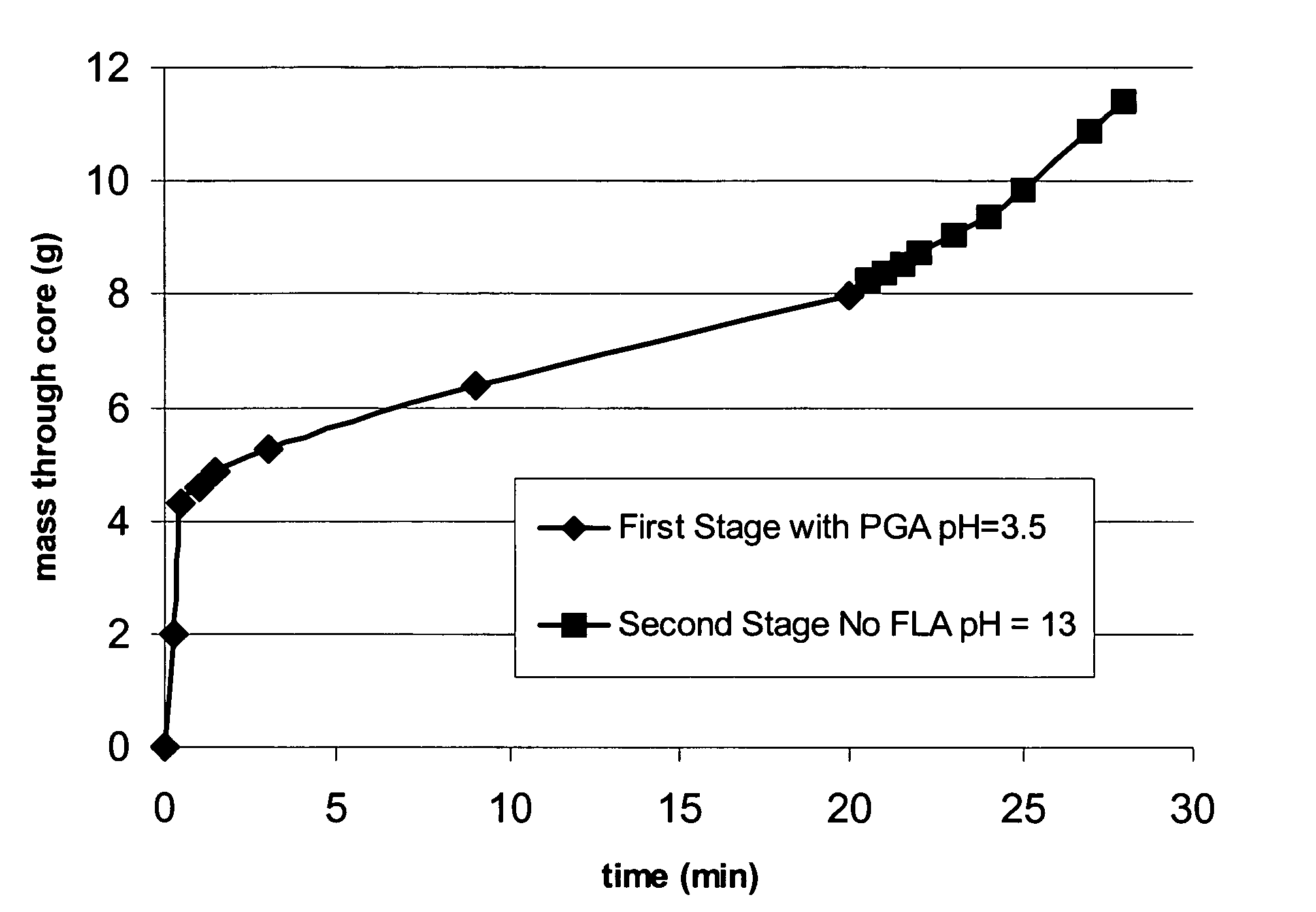Dissolving filter cake
a filter cake and filter technology, applied in the direction of fluid removal, wellbore/well accessories, chemistry apparatus and processes, etc., can solve the problems of reduced pump rate, inability to allow, and no longer mobile slurry
- Summary
- Abstract
- Description
- Claims
- Application Information
AI Technical Summary
Benefits of technology
Problems solved by technology
Method used
Image
Examples
example 1
[0065]To demonstrate an embodiment of the Invention, a static fluid loss cell was set up with a Berea sandstone core of 200 mD permeability. A viscoelastic fluid containing PGA was prepared by dispersing 0.5 weight percent PGA in water, adding 0.2% sodium sesquicarbonate buffer to keep the pH at about 10, and then adding 6 weight percent of a concentrate that contained about 40 weight percent of erucic amidopropyl dimethyl betaine, about 5 weight percent sodium chloride, about 22 weight percent isopropanol, about 1 weight percent polynaphthalene sulfonate, and about 5 weight percent water. This fluid was prepared in a Waring blender at “moderate”speed. The PGA used was Dupont TLF 6267, described by the supplier as a crystalline material having a glass transition temperature of about 49° C., a melting point of about 200 to 210° C., a molecular weight of about 600, and a mean particle size of about 8 to 15 microns. This fluid was pumped through the core with a differential pressure of...
example 2
[0067]The ease of hydrolysis and dissolution of Dupont PGA TLF 6267 was determined by suspending samples of the PGA in water adjusted to different pH's. 0.2 Weight percent sodium sesquicarbonate was used to buffer at pH 10. For pH 12 the fluid was adjusted by adding either KOH and NaOH with identical results. The suspensions were heated to the desired temperature, held at that temperature without stirring for the indicated time, and the results were noted. The PGA was considered dissolved when none was visible in the solution to the unaided eye. Results are given in Table 1, and show how simple experiments can be used to determine the pH at which a given solid base-soluble material will dissolve at a given temperature in a given amount of time.
[0068]
pHTemperature, ° C.Dissolution time1066~10 hours1266 10116
PUM
| Property | Measurement | Unit |
|---|---|---|
| melting point | aaaaa | aaaaa |
| melting point | aaaaa | aaaaa |
| melt temperatures | aaaaa | aaaaa |
Abstract
Description
Claims
Application Information
 Login to View More
Login to View More - R&D
- Intellectual Property
- Life Sciences
- Materials
- Tech Scout
- Unparalleled Data Quality
- Higher Quality Content
- 60% Fewer Hallucinations
Browse by: Latest US Patents, China's latest patents, Technical Efficacy Thesaurus, Application Domain, Technology Topic, Popular Technical Reports.
© 2025 PatSnap. All rights reserved.Legal|Privacy policy|Modern Slavery Act Transparency Statement|Sitemap|About US| Contact US: help@patsnap.com


